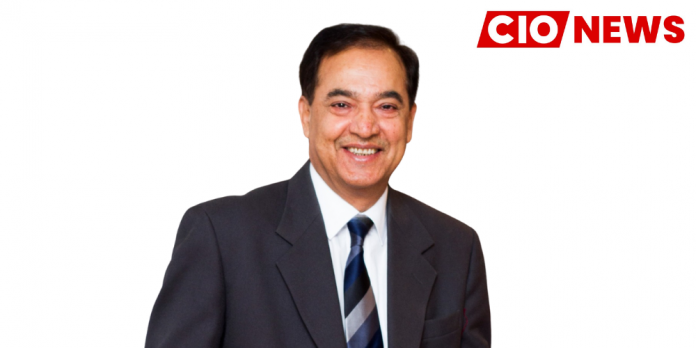
My entry into this exciting profession was during the early days of Information Technology when a number of Global Technology leaders were busy in their garages building a Digital tomorrow
When asked how he planned his career path to be a successful technology leader, Arun Tewary, Strategic Advisor and Director at Finesse Global, in an exclusive interview with CIO News, said, there was no planning involved in shaping out or for that matter choosing the career path of Information Technology. My entry into this exciting profession was during the early days of Information Technology when a number of Global Technology leaders were busy in their garages building a Digital tomorrow.
When asked about challenges he faced in his career path and how he overcame them, he said, the most visible and impacting challenge was to keep pace with ever-evolving technology. When you are part of an in-house IT Team, you get deeply engrossed in supporting the organization for which you are working and then keeping a reasonable balance between regular organizational work, upgrading your skills, keeping up with emerging technologies and your personal life becomes a bit challenging. After realizing this imbalance, I tied a few things and it worked. Things like, setting the professional objective in terms of self-learning, professional certifications with a strict time regime and routing some tasks through delegation, attending professional seminars, and knowledge transfer with the team.
When asked about a cyber-attack or any security incident faced by his current organization and how he tackled it, he said, we came across such a situation when I was the Head of IT in one of the organizations (not the present one), where a user, while doing some market research clicked on a link and her system got hacked. This spread up to 11 more users. As soon as it came to our attention, we isolated all these users from our corporate network. The attack was most severe for the first user, who had clicked on the link (unknowingly) – her system was encrypted by the hacker leading to asking for ransom, which was refused. However, we had a few days’ old back-ups, which were used to recover from the crisis with some compromise.
When asked how his organization geared up in terms of technology in the COVID times, he said, the COVID situation was very unique and for us never seen before, because we never practiced Working from home in the past. We started preparing the organization well in advance (two weeks in advance), in anticipation that we might hit a situation when most of the organizations might be required to work from home. Firstly, we reviewed our infrastructure to ensure that it is robust enough to handle the increased load, we reviewed all laptops and desktops with respect to cyber security and got those hardened, and the same was done with servers and other hardware. Application wise we didn’t have many challenges. We selected a select group of users (mostly from IT and some from Finance) as a pilot group to work from home for a day and collected feedback from them and applied it to enhance the environment. Similar exercises were carried out with different users groups and then finally we were ready. And then comes D-Day – the entire organization (except for those who needed to work onsite only) was Work from Home. It was a very enriching experience indeed.
When asked about technology solutions and innovations he plans to implement in the post COVID era, he said, presently busy with a major Digital Transformation program for my current organization, the focus is on Intelligent ERP, IoT, AI/ML, and extreme automation – Hyper automation. Cyber security goes hand-in-hand.
When asked about challenges faced by technology leaders today in a similar industry while implementing digital technologies, he said, I look at today’s challenges as opportunities, which should be taken to our advantage, bettering the industry and up-skilling ourselves. To be very specific, currently, I am advising two different types of industries – one in Garments manufacturing and the other in Information Technology services. Challenges/opportunities are different. For the garments sector: establishment/availability of best practices and IT Services in terms of extreme competition and price war. In the manufacturing sector, the industry needs to firmly believe in process transformation before or alongside digital transformation. Another big challenge is the rapid mushrooming of new products in the cloud area in a large number with many being looked at even without successfully passing through the Hype Cycle Curve (the term introduced and popularized by Gartner).
When asked about best practices/industry trends/advice he would like to suggest to fellow technology leaders for their successful professional journeys, he said, stay focused on your goal. Start your journey with a comprehensive, relevant, and achievable strategy, and then follow that without uncalled-for deviations. Do not chase the technology otherwise you will never reach your destination. Business transformation must be done before automation otherwise you will land up automating the legacy processes only which is not the most desirable outcome.
He highlighted, whatever you undertake, do it with passion. Irrespective of how much busy you are, keep pace with technology in terms of your skill upgrades. Remain active with the professional community and keep contributing – “as a team, we grow better and faster”.
Also read: CIO News interviews Shri Wangki Lowang, Minister (IT) of Arunachal Pradesh
Do Follow: CIO News LinkedIn Account | CIO News Facebook | CIO News Youtube | CIO News Twitter
About us:
CIO News, a proprietary of Mercadeo, produces award-winning content and resources for IT leaders across any industry through print articles and recorded video interviews on topics in the technology sector such as Digital Transformation, Artificial Intelligence (AI), Machine Learning (ML), Cloud, Robotics, Cyber-security, Data, Analytics, SOC, SASE, among other technology topics





